Superhero volunteers save shelter pets

This article originally appeared in Best Friends magazine. You can subscribe to the magazine by becoming a Best Friends member.
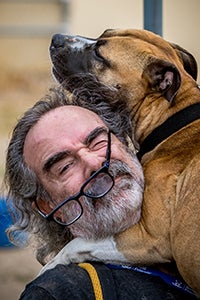 Best Friends is committed to taking the country to no-kill by 2025 — to ending the killing of pets in shelters, thereby saving millions of lives in the process. It’s what fuels us. And we know, beyond all doubt, that a huge — immeasurable, even — part of the way that we will achieve this is through the efforts of that special breed of person, the superhero known as the volunteer.
Best Friends is committed to taking the country to no-kill by 2025 — to ending the killing of pets in shelters, thereby saving millions of lives in the process. It’s what fuels us. And we know, beyond all doubt, that a huge — immeasurable, even — part of the way that we will achieve this is through the efforts of that special breed of person, the superhero known as the volunteer.
Sure, they take dogs for walks and scoop litter boxes and engage in any number of noble ways to pitch in. But many of these selfless beings take the act of rolling up their sleeves a step or two further. They raise funds, educate the public, manage lifesaving programs and perform many other crucial tasks in our shared quest to Save Them All. While their capes may not be visible to the naked eye, their superpowers are nonetheless ever-present. As Pat Guerrero, Best Friends’ senior manager of volunteer engagement and programs, puts it: “Volunteers are our partners, working side by side with staff in achieving our goals.”
For volunteers, achieving those goals doesn’t come down to a paycheck. It comes down to a passion. And there’s a lot to be said for good old-fashioned passion, of which these noteworthy individuals happen to have no shortage.
Found puppy, found purpose
Jessica Roper only began helping out at Best Friends recently, in May 2018, but you wouldn’t know it based on the number of hours she has put in. Although she’s employed as a lecturer at Rice University, she also works a full-time (not a typo) volunteer job overseeing Best Friends’ foster program in Houston, Texas, clocking an average of a staggering 220 volunteer hours per month. (Also not a typo.)
Though that may seem like a disconnect — to go from college educator to animal enthusiast with such vigor — Jessica says: “My jobs may seem pretty different, but there is some overlap. Every day, I’m trying to convey information to people in a way that they’re going to absorb it. I’m trying to tell stories in a way that people are going to want to get involved.”
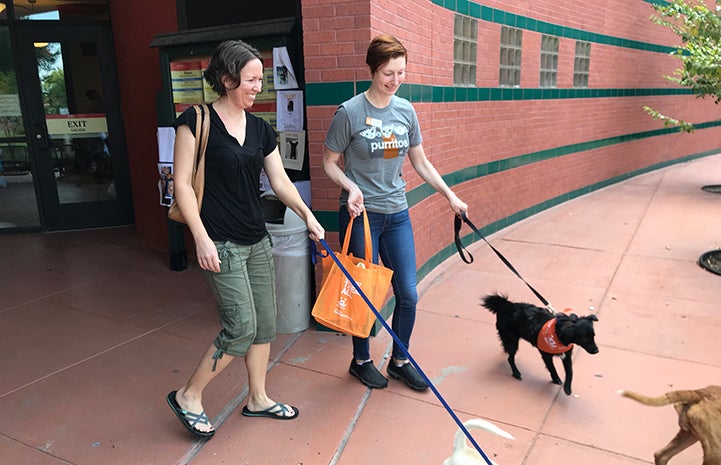
But 220 hours a month? That number of volunteer hours clearly begs the question: What drives her? The desire to get more people involved in rescue has been Jessica’s motivator since the life-altering day in 2013 when she found a puppy on the streets of Houston. She picked up the dog with the intent of finding help at a local animal shelter; however, every shelter that Jessica called for assistance turned her away. They simply didn’t have the space or resources to take in the dog.
It wasn’t all bad news, though. She ultimately adopted the little guy, who she named Hank. And, like so many people who fall under the umbrella of change maker, she used a negative situation to catapult herself into action. “I felt so hopeless and helpless,” Jessica says about that experience. “I committed right then and decided I didn’t want any other person to feel that way. I wanted to work so that people would be able to access the information and resources they need to help animals if that’s what they want to do.”
So, she began volunteering with a local rescue organization, and saw firsthand that she could change people’s attitudes and get them involved in rescue by empowering them with knowledge and resources. For example, when a woman came to the shelter clutching a cardboard box containing a tiny injured kitten, Jessica explained that kittens are at high risk of illness or even death in shelters, and she asked the woman if she’d be willing to foster the feline if she was given support and supplies. It took some convincing, but eventually the woman agreed — and the experience changed her.
“She came to the shelter with this certain attitude about animals. She didn’t think cats belonged in the house,” Jessica says. “But we got that kitten medical care, and she took him and his littermates into her home. Now that woman is saying, ‘I love these animals. My whole family has grown so attached to them. We never knew we could have this kind of bond with animals.’ Those experiences are what fuel me and give me hope for the future. Before I got involved with Best Friends, I’d lie awake at night, thinking that so many animals are dying all over the country, but what can I do as a single person? I know that my efforts are going further, and it never feels like work to me. I’m choosing to do this because it’s what I want to do every day of my life.”
As far as we’re concerned, it just doesn’t get more rewarding than that.

Weekends go to the dogs
If you think folks like Jessica — a person with a busy career who cares so deeply that she channels her depth of desire for change into sizeable action — are rare, we assure you she’s not alone. Far from it, in fact.
Take Layne Dicker. When the Los Angeles attorney isn’t in his office or on the phone with a client, chances are you’ll find him engaging in some type of assistance as it pertains to animals in need. He may be running play groups at the Best Friends Lifesaving Center in L.A. or bottle-feeding foster kittens alongside his wife, Sally, or transporting dogs to and from Best Friends Animal Sanctuary in Kanab, Utah.
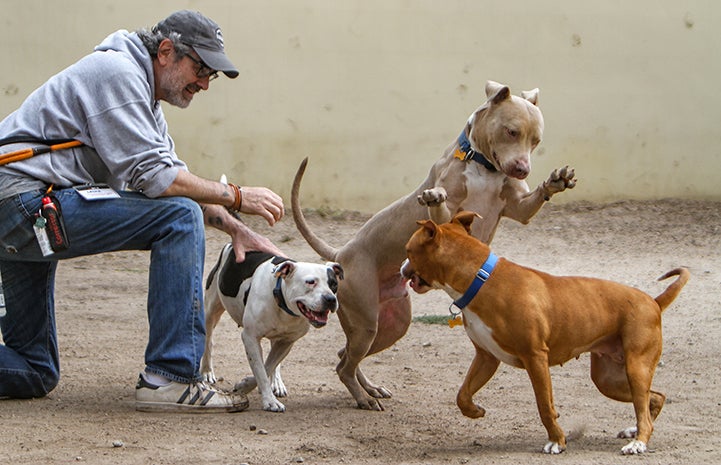
While this is a man who puts in work on a day-to-day basis, he’s also not afraid to get his hands dirty when unforeseen disaster strikes. When Best Friends calls, Layne answers — even if it requires a flight to Houston in the aftermath of a hurricane. “Nothing compares to my week in Houston after Hurricane Harvey,” he says. “I have never worked that hard under such difficult circumstances, yet I didn’t want to leave. It was such a visceral experience, clearly seeing the results of your efforts in hundreds of animals’ faces every day.”
Despite working 75 hours per week and having his own menagerie of furry and feathered friends to care for, Layne makes volunteering a priority, and he believes — strongly — that it’s something any of us can do. “We all have the same amount of time: 24 hours in every day,” he says. “But if we want something badly enough, we figure out a way to get it. Helping animals is what I want to do, so I make it work.”
To that end, Layne’s weekends go to the dogs, but in a good way. He devotes many of his Saturdays and Sundays to dogs at the Best Friends Lifesaving Center, and every six to eight weeks, he heads to the Sanctuary in Kanab to help out with the residents of Dogtown.
Layne’s dedication is undoubtedly selfless; however, that’s not how he sees it. “I don’t pretend that there’s anything particularly altruistic about this. I do it because it makes me feel good,” he says. “The gratification in helping a scared animal find comfort in a new home or helping them develop the confidence to show themselves to the public and get adopted is indescribable.”
He even credits his social life to his involvement with Best Friends. Layne says: “I’ve met and become closest friends with countless people both in L.A. and Utah, as well as remote Best Friends employees all over the country. It’s so nice to spend time with people who share your passion, people to whom you don’t have to apologize if the house smells like dog pee.”
He goes on to say: “Rarely can you use the sentence ‘I only have three dogs’ among non-rescue people.” We won’t argue with that.
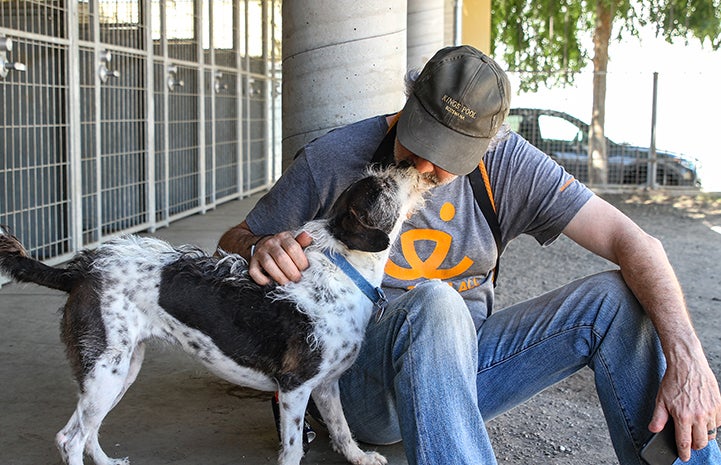
Near or far, helping out is possible
While volunteers like Layne are in the trenches, nose to nose with the pets they are helping to save, not everyone making a difference in animals’ lives works hands-on with them. In fact, some of the people doing critical volunteer work rarely interact with the animals at all. How is that possible, you may wonder? Well, just ask Laura Rozler, a former administrative assistant and conference planner.
Based in Canandaigua, New York, Laura isn’t geographically close to any of Best Friends’ operations, but that hasn’t stopped her. She’s been volunteering with Best Friends since 2011. Whether doing research and data entry from home or working on-site to help the Best Friends National Conference run smoothly, she’s an indisputable asset. “(Best Friends) gives me a unique path to help animals in a way that others may not be able to,” Laura says. “This is the first organization I have volunteered with where no matter your skill level or time commitment, they always have something for everyone.”
Laura’s dedication to Best Friends started during a trip with girlfriends to the Sanctuary nearly a decade ago. She continues to make the cross-country trek occasionally to spend time with the animals. One animal who left a lasting impression on her was Bessie, a dog who showed Laura firsthand the effects of the lifesaving work that she helps support.
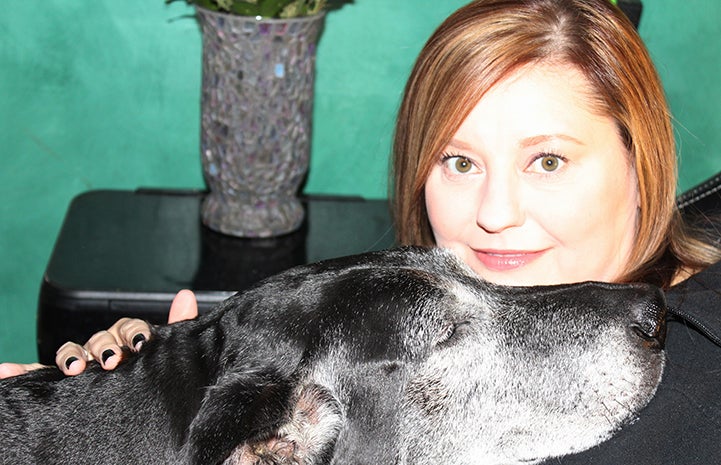
“Bessie was new to Dogtown and still a bit apprehensive,” she recalls. “Her caregiver let me know that our walk might not go well. We went about 30 feet before she shut down. It was heart-wrenching for me. Fast-forward to 2013, when I was asked to take Bessie out again. This time, we did the whole trail. Bessie’s courage and comfort were a direct result of the amazing caregivers and volunteers who helped her get to the point where she could walk with someone she didn’t know. Being part of this community that understands and shares my love of animals is such a beautiful thing.”
Whether it’s facilitating a play group for dogs who would find themselves less adoptable without proper socialization (think Layne Dicker). Whether it’s sharing knowledge that can ultimately turn an apprehensive person into an animal person (think Jessica Roper). Whether it’s using one’s skills behind the scenes to ensure that crucial data is usable (think Laura Rozler). Regardless of where you find yourself on the spectrum of giving, when it comes to ending the killing in shelters, it all matters.
Just because no one else can see your cape doesn’t mean it’s not there. (After all, we can see it — and it looks great on you.)
You can be a hero too. Volunteer near you
Photos by Todd Roisman, Laura Rozler and Best Friends staff